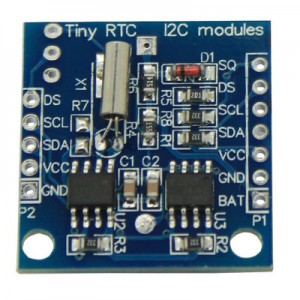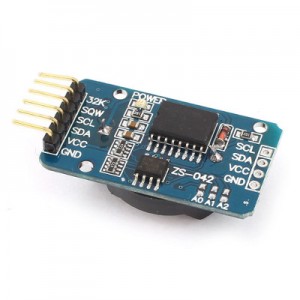The AT24C32 (24c32) is a small eeprom that comes on popular, dirt cheap, RTC boards (but of course is also available separately). Using the datasheet it’s easy enough to get working on the ESP8266. All the AT24C series chips work the same, except for an extra address bit in the 1Mb version, so the example code below can be used with any model (see the note in the header file about the 1Mb chip).
The chip basically has two operations:
- Read from current position.
- Write to specified position.
Technically there is no read from specified position. To do this you must make a dummy write, as the datasheet refers to it. This basically means starting a write operation, which begins by setting the address, then not sending any actual data (or an I2C stop). Instead you perform an I2C start again and perform a read as normal.
When reading you can read as much data as you like. When writing you can only write up to 32 bytes at a time. A write operation is restricted to a single 32 byte page (or part of one). You do not need to start at the beginning of the page. Regardless of where you start in a page, if you continue to write after reaching the end of the page you will wrap back to the start of it and continue writing there. This means you need to keep track of how much you are writing and where the next page boundary is.
The example driver code attached, written for the C API of the official Espressif SDK, handles all the issues above. You can write as much as you like, wherever you like – it will perform multiple write operations across pages as you’d expect. You can can also read from specified locations and the driver will perform the dummy write for you to set the starting address. You can still read from the current position and write inside a looping page if you like. You should be able to drop this code straight into your ESP8266 project, set the I2C address in the header file (according to your address pins) and start reading and writing to your eeprom with ease.
Code now on GitHub: https://github.com/raburton/esp8266

